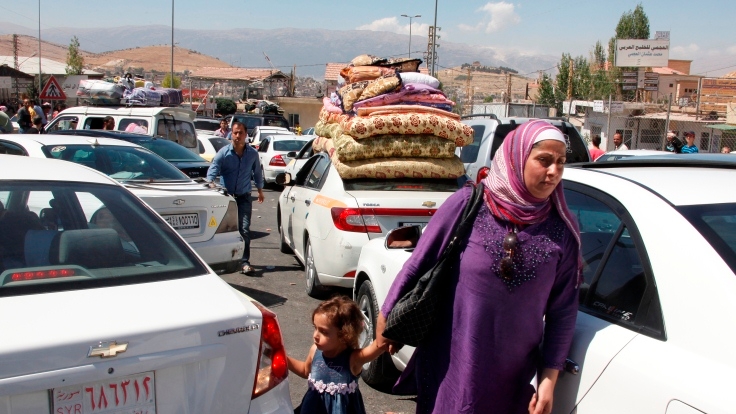Cars, decrepit vans and trucks stream into Lebanon packed with families sitting among bundles of belongings, suitcases and mattresses. This is a daily routine at the two official border crossings in North and East Lebanon offering Syrians fleeing the violence in their country a road to safety.
The Government of Lebanon has, upheld an “open-border” policy based on the strong historical, economic, social and political bonds between the neighboring countries. Humanitarian agencies, non-governmental organizations, both local and international, and Government centers, though understaffed and ill-equipped, are exerting enormous efforts to help with the flow of refugees, now approaching one million, or 22 percent of Lebanon’s population.
The big dilemma in Lebanon is how can a resource-poor, debt-ridden and cash-strapped country cope with the impact of the refugee tragedy that has hosting communities under immense economic and social stress?
At the request of the Lebanese government, the World Bank Group has undertaken an Economic and Social Impact Assessment (ESIA) of the Syrian Crisis on Lebanon, in cooperation with other development partners, namely the United Nations agencies, the European Union and the International Monetary Fund.
The findings of the economic and social impact assessment are alarming, projecting that the refugee population will reach 1.6 million, or 37 percent of Lebanon’s overall population, by the end of 2014. Government expenditure will be pushed by billions of dollars over the next 15 months to meet surging demand for public services, including health, education, water and electricity. It will widen even further a fiscal deficit that already stands at 8.7 percent of Gross Domestic Product (GDP), or US$3.7 billion.
Even before the eruption of the Syrian conflict in March 2011, and the hundreds of thousands driven across the border by the fighting, Lebanon was grappling with a depleted infrastructure and inadequate public services. Electricity supplies average 18 hours per day, and much less in rural regions. Public water services are limited to three days per week at best. Overcrowded public schools and insufficient capacity at government clinics and hospitals that cater for the lower-income population, especially in rural areas, have been the subject of news stories and civil society activism for nearly a decade. The flow of refugees is stretching all of these sectors to the limit.
Refugees in Lebanon are hosted among the population across the country, with the largest concentrations in northern and eastern Lebanon, where poor, farming communities struggle to make ends meet.
The growing size of the refugee population is expected to impact economic growth, increase poverty and unemployment among the Lebanese and further tax a tight budget situation in a country grappling with a public debt that has risen to US$57.7 billion, or 134 percent of the GDP in 2012 – one of the highest debt ratios in the world.
Affluent Syrian refugees have settled in urban communities, especially Beirut and its environs, where the added demand on housing is driving up rents.
But the unskilled refugees, who are the majority, are sheltering in schools, makeshift tents and unfinished construction sites, mosques and with Lebanese families. One refugee family in northern Akkar’s district of Wadi Khaled turned a latrine in a potato grove into a shelter for four children while the parents sleep in open air, even though winter is looming.


